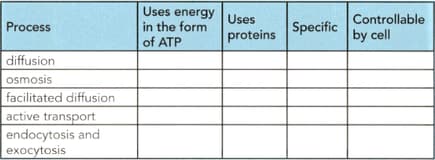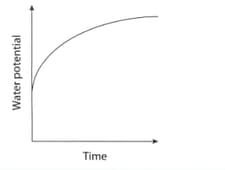Mary Jones, Richard Fosbery, Dennis Taylor and, Jennifer Gregory Solutions for Chapter: Cell Membranes and Transport, Exercise 13: EXAM-STYLE QUESTIONS
Mary Jones Biology Solutions for Exercise - Mary Jones, Richard Fosbery, Dennis Taylor and, Jennifer Gregory Solutions for Chapter: Cell Membranes and Transport, Exercise 13: EXAM-STYLE QUESTIONS
Attempt the practice questions on Chapter 4: Cell Membranes and Transport, Exercise 13: EXAM-STYLE QUESTIONS with hints and solutions to strengthen your understanding. Biology for Cambridge International AS & A Level coursebook 2nd Edition Digital Access solutions are prepared by Experienced Embibe Experts.
Questions from Mary Jones, Richard Fosbery, Dennis Taylor and, Jennifer Gregory Solutions for Chapter: Cell Membranes and Transport, Exercise 13: EXAM-STYLE QUESTIONS with Hints & Solutions
Where are the carbohydrate portions of glycolipid and glycoproteins located in the cell surface membrane?
In a signalling pathway, which of the following types of protein acts as a switch to release a second messenger?
One role of cholesterol in membranes is
Describe fully what will occur if a plant cell is placed in a solution that has a higher water potential than the cell.
Use the following terms in your answer:
(cell wall, freely permeable, partially permeable, cell surface membrane, vacuole, tonoplast, cytoplasm, water potential, turgid, osmosis, protoplast, equilibrium)
Describe fully what will occur if a plant cell is placed in a solution that has a lower water potential than the cell.
Use the following terms in your answer: (cell wall, freely permeable, partially permeable, cell surface membrane, vacuole, tonoplast, cytoplasm, water potential, incipient plasmolysis, plasmolysed, osmosis, protoplast, equilibrium)
Copy the table below and place a tick or cross in each box as appropriate.

Complete the table below to compare cell walls with cell membranes.

A plant tissue was placed in pure water at time zero. The rate of entry of water into the tissue was measured as the change in water potential with time. The graph shows the results of this investigation.

Describe and explain the results obtained.
